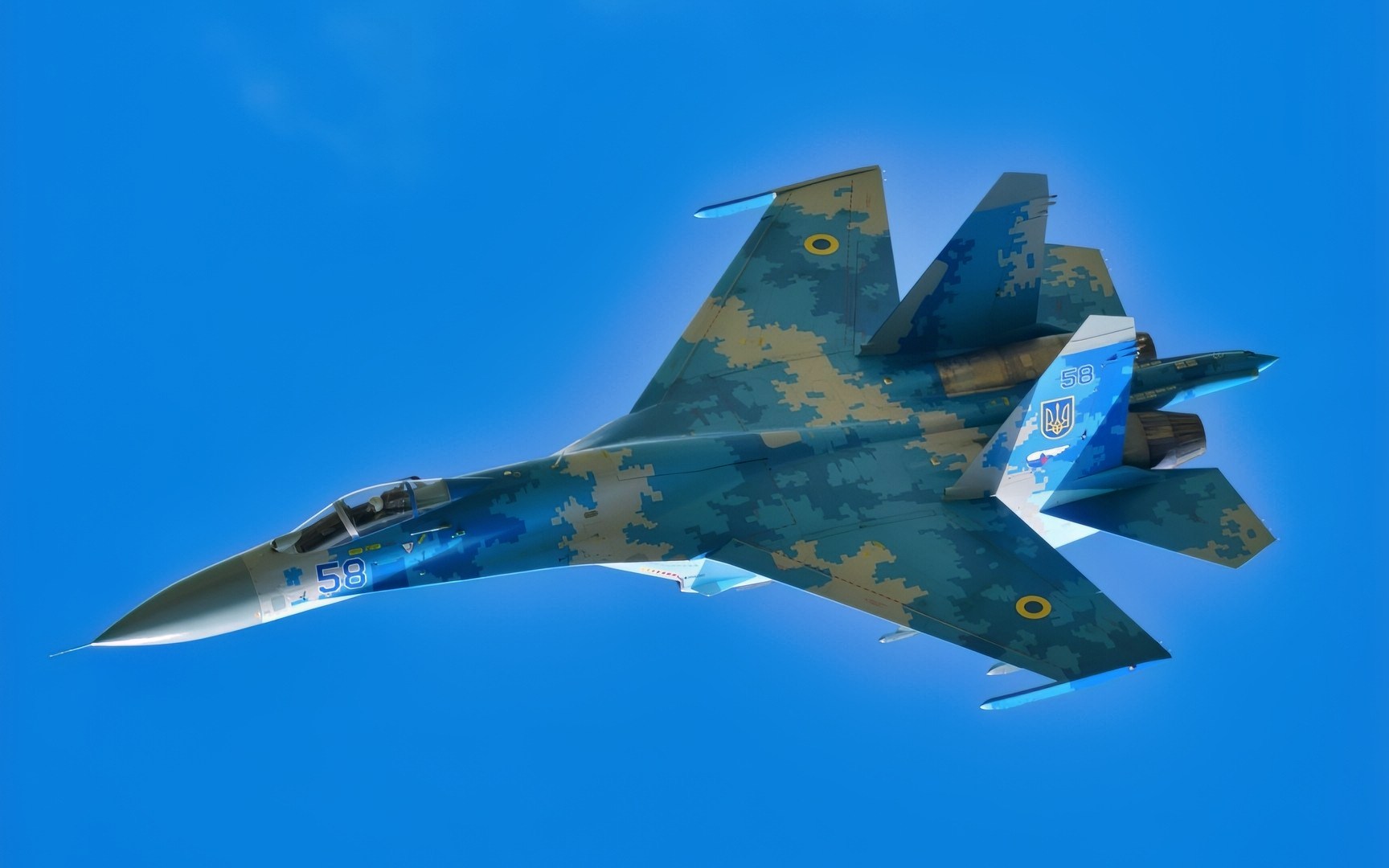Key Points and Summary – The Su-27 entered service in 1985 as the USSR’s premier agile heavyweight fighter—long denied to U.S. evaluators.
-After the Soviet collapse, a workaround emerged: Illinois-based Pride Aircraft bought two Su-27UB trainers from cash-strapped Ukraine around 2009, reassembled and FAA-registered them (N131SU/N132SU), then sold them in 2011.
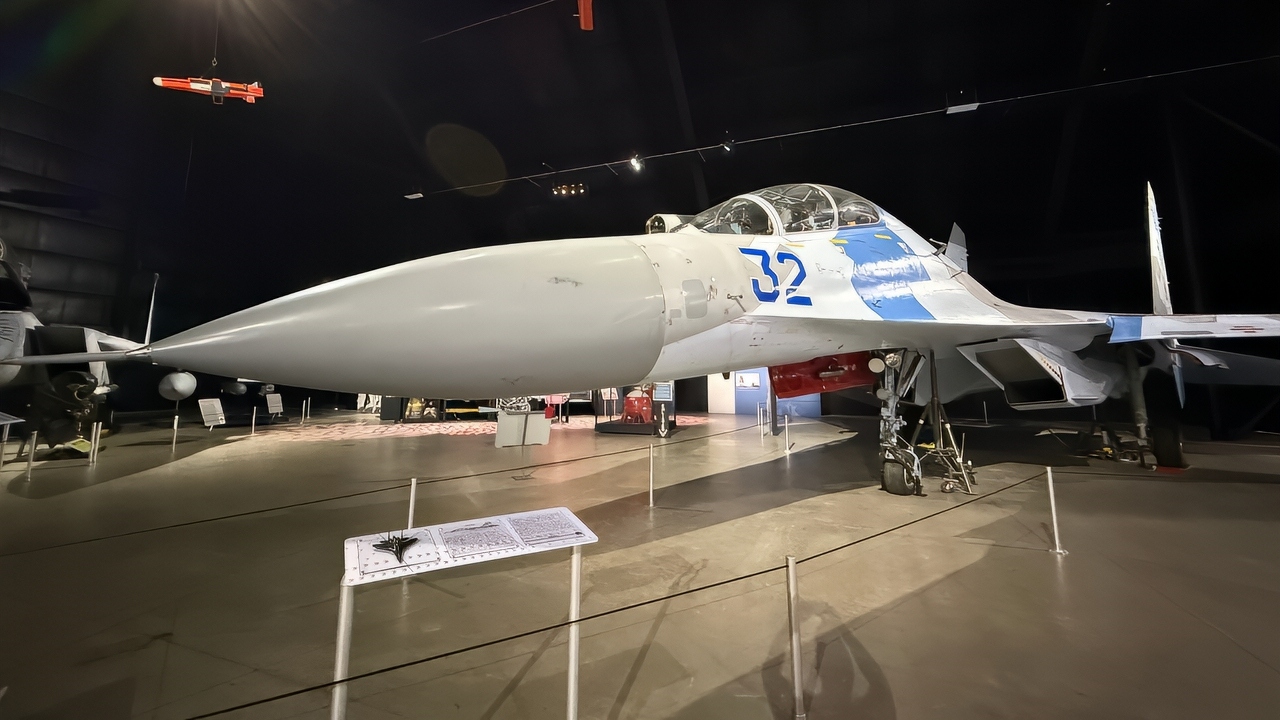
Su-27 Flanker Up Close. Image Credit: National Security Journal Taken on July 19, 2025.
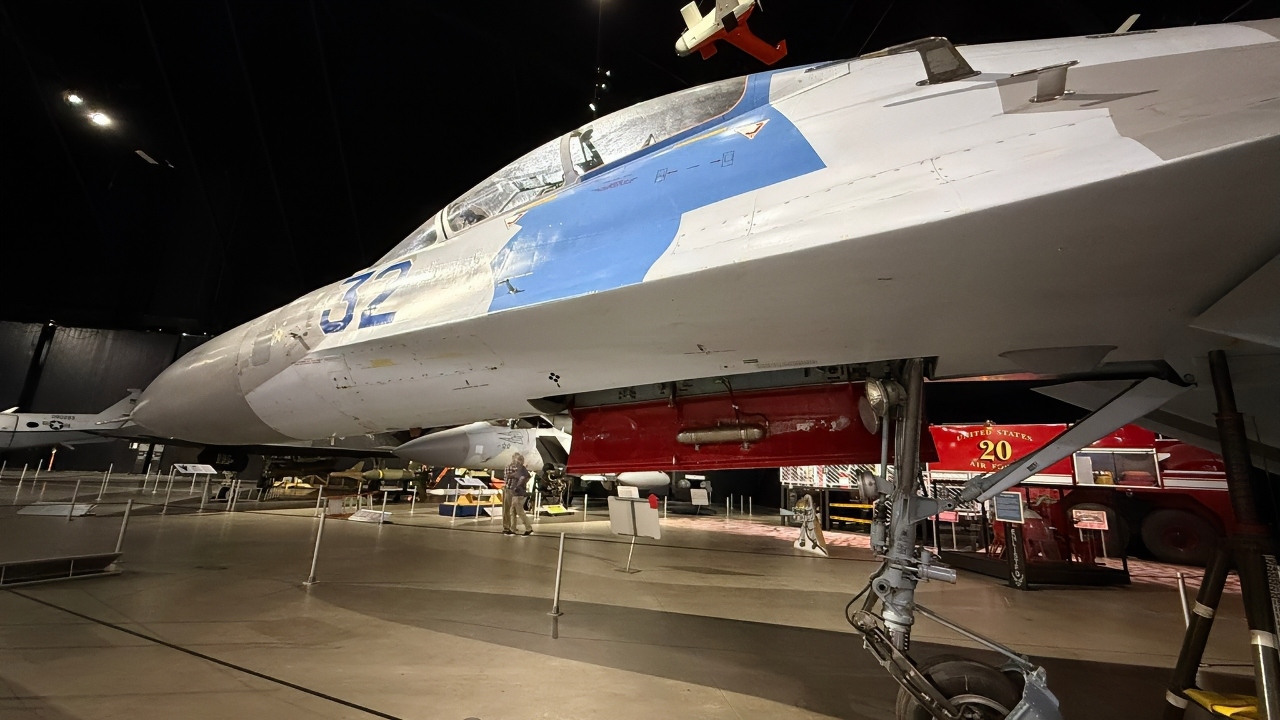
Russian Su-27 Flanker from USAF Museum. Image Credit: National Security Journal.
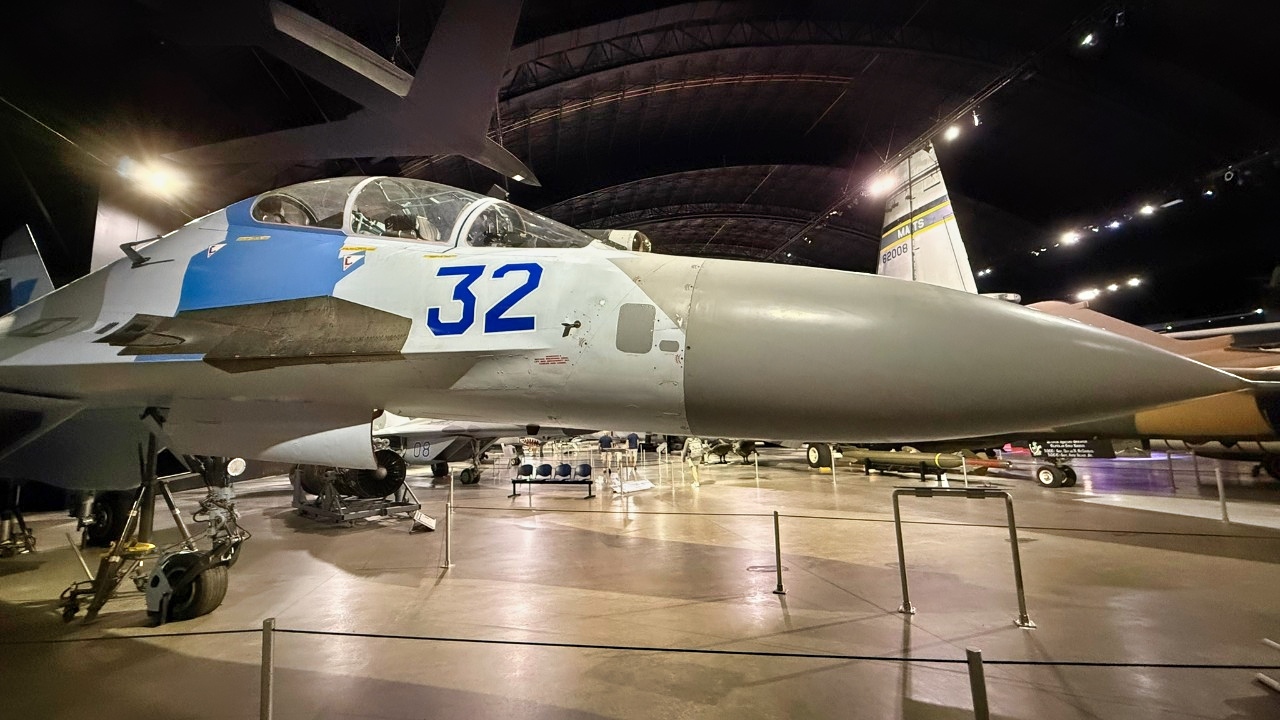
Su-27 Flanker Fighter from Russia. Image Credit: National Security Journal.
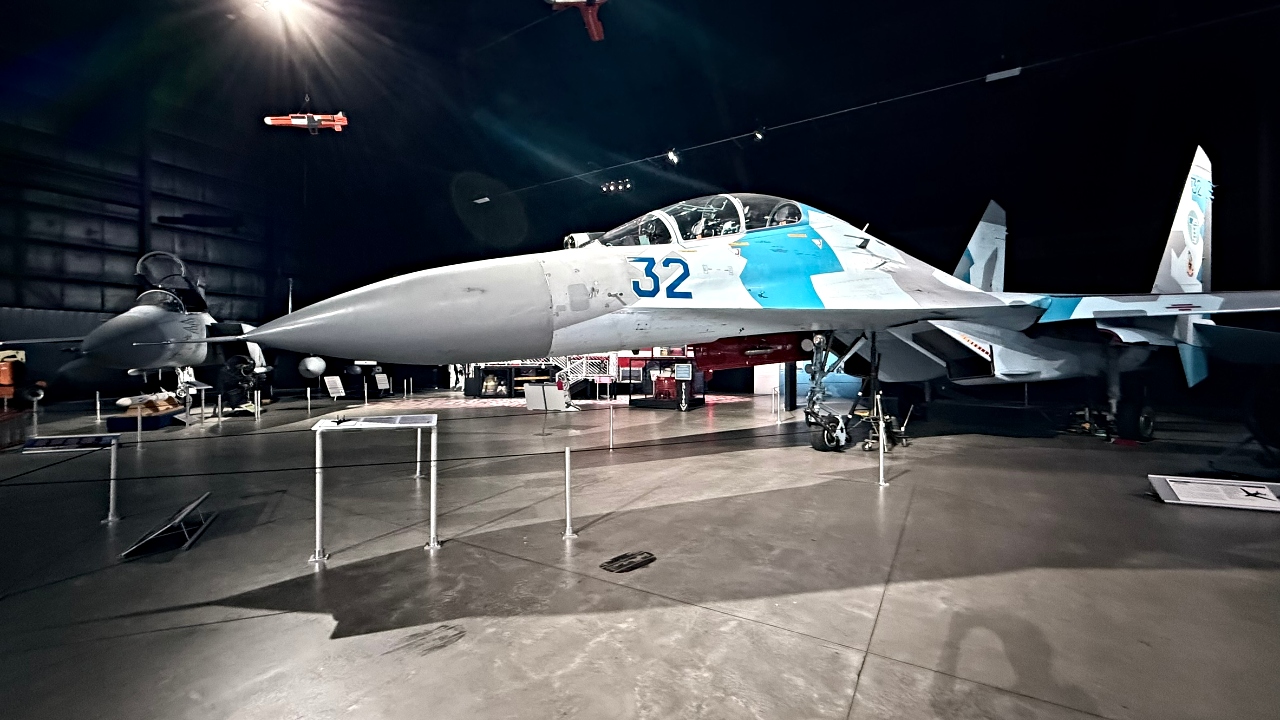
Su-27 Flanker from U.S. Air Force Museum. Image Credit: National Security Journal.
-The jets disappeared from public view and almost certainly moved into the Pentagon’s Foreign Material Exploitation enterprise.
-One later surfaced at the USAF museum, and the Air Force confirmed a 2011 Su-27 purchase tied to Terralliance’s bankruptcy. Flying and dissecting real Flankers sharpened U.S. tactics, aggressor training, EW counters, and informed future sensors and propulsion.
-Bonus: The National Security Journal flew out to the U.S. Air Force Museum to see the Su-27 Flanker in person. Some of the photos we took are in this article.
Su-27 Flanker Fighter: How The U.S. Military Bought Them
The Sukhoi Su-27 Flanker made its first flight in 1977 and was introduced into service in 1985. Upon its introduction, it was the Soviet Union’s most advanced and capable fighter jet behind the MiG-31.
Despite the jet’s large size and heavy weight, the Su-27 was and still is one of the most maneuverable fighters in the industry thanks to its aerodynamic design and high-performance engines.
For the longest time, the U.S. was unable to get its hands on the Flanker until the Cold War ended.
Using clever deception tactics, the U.S. acquired two Su-27s from the newly independent Ukraine and finally unraveled the secrets of one of the USSR’s finest aircraft.
The Soviet Union’s Finest Fighter Jets
The Su-27 was born from the Heavyweight Prospective Frontline Fighter (TPFI) program. This program was made as a response to the American F-15.
The aircraft earned a reputation for its supermaneuverability, mainly due to its aerodynamic design, fly-by-wire systems, and two Saturn AF-31F turbofan engines.
In terms of avionics, the Flanker was impressive for its time. It was equipped with a N001E all-weather radar, IRST systems, helmet-mounted displays, electro-optical targeting systems, and much more.
These systems and capabilities made the Su-17 a dangerous opponent in the skies, even to its technologically advanced American opponents.
Because of its advanced capabilities, the USSR refused to export the Su-27 to anyone. After several instances of client states selling Soviet-made technology to the Americans, the USSR decided to keep the Su-27 as a Soviet-exclusive fighter jet.
Even after the end of the Cold War, Ukraine was the only post-Soviet state to inherit any Flankers.
This policy made it difficult for the U.S. to obtain the aircraft and study it. When the USSR dissolved, however, the Americans finally saw their opportunity.
How the U.S. Two Su-27 Flankers
Rather than purchasing the jets directly, the U.S. government relied on private intermediaries to avoid diplomatic complications. In this case, Pride Aircraft, a company based in Rockford, Illinois, played a key role.
Around 2009, Pride Aircraft acquired two Su-27UB trainers from a cash-strapped Ukraine for roughly $5 million each (which is a fraction of their original value). These two-seat variants were ideal for evaluation because they retained full flight performance while offering space for an instructor or systems operator.
The aircraft were shipped to the U.S. aboard Antonov An-124 cargo planes, disassembled for transport.
Once in Illinois, Pride Aircraft reassembled them, overhauled their engines, and modified their systems to comply with U.S. regulations, even installing some Western avionics to make them airworthy under FAA standards.
Initially, Pride Aircraft advertised the Su-27s for sale to private collectors and registered them with the FAA as N131SU and N132SU.
Photos circulated online showing the jets in Ukrainian-style camouflage, which spread among aviation enthusiasts like wildfire. However, by 2011, Pride Aircraft quietly announced that both aircraft had been sold, without naming the buyer.
The company later went bankrupt, and the jets disappeared from public view.
For years, speculation ran rampant: had a wealthy collector purchased them, or had they vanished into the classified world of U.S. military testing?
The most plausible explanation is that the aircraft entered the Pentagon’s Foreign Material Exploitation (FME) program, which studies foreign weapons systems to understand their capabilities and weaknesses.
During the Cold War, similar programs operated MiG fighters at secret sites like Groom Lake (Area 51) for adversary training.
Evidence supports this theory: one Su-27 resurfaced in 2023 at the National Museum of the U.S. Air Force after more than a decade of secrecy, and the USAF confirmed in 2024 that it had purchased at least one Su-27 in 2011 after its original private owner, Terralliance Technologies, went bankrupt.

The Soviet-designed Su-27 all-weather fighter-interceptor was created to counter the American McDonnell Douglas F-15 Eagle. This two-seat trainer version, designated Su-27UB, entered USSR service in 1986 and still flies with Russian forces and other nations. Its NATO name is Flanker-C. Image Credit: U.S. Air Force.
Terralliance had initially acquired the jets for an unrelated oil exploration scheme before selling them to the government.
Why the U.S. Wanted the Su-27
The Su-27s were invaluable to the U.S., as they allowed Americans to understand one of their adversaries’ primary weapons. The U.S. Air Force invests heavily in realistic training environments to ensure its pilots are prepared for high-end conflicts.
Programs like Red Flag and aggressor squadrons simulate enemy tactics using aircraft that approximate foreign designs.
However, no simulation can fully replicate the performance of an actual Su-27.
By flying real Flankers, U.S. pilots could experience firsthand the aircraft’s aerodynamic capabilities.
This level of realism enhances pilot proficiency in visual-range engagements and helps develop tactics to counter adversaries operating similar platforms. As Russian-designed fighters proliferated globally, the need for authentic training tools became even more pressing.
Examining real Flankers was a dream come true for many in the intelligence community. Studying the Su-27’s airframe, engines, and avionics allowed U.S. engineers to benchmark American designs against one of the most capable Soviet fighters ever built.
For example, the Su-27’s Saturn AL-31F engines and aerodynamic layout provided insights into supermaneuverability and thrust-to-weight ratios that influenced future U.S. aircraft development.
Additionally, the Flanker’s radar and electronic warfare systems offered clues about Soviet sensor technology and countermeasure strategies.
This knowledge was critical for improving U.S. stealth platforms, electronic warfare suites, and radar systems to maintain a technological edge.
About the Author: Isaac Seitz
Isaac Seitz, a Defense Columnist, graduated from Patrick Henry College’s Strategic Intelligence and National Security program. He has also studied Russian at Middlebury Language Schools and has worked as an intelligence Analyst in the private sector.
More Military
Russia’s Mach 2 Su-30SM Fighter Has A Message for Any Air Force on Earth
The Mach 2.2 B-1A Bomber Has A Message for the U.S. Air Force
The Mach 2.35 ‘Super’ Eurofighter Typhoon Fighter Has a Message for Any Air Force On Earth
Canada’s CF-18 Hornet Fighter Crisis
Forget NGAD or the J-20: A 7th Generation Fighter Could Hit Mach 5


